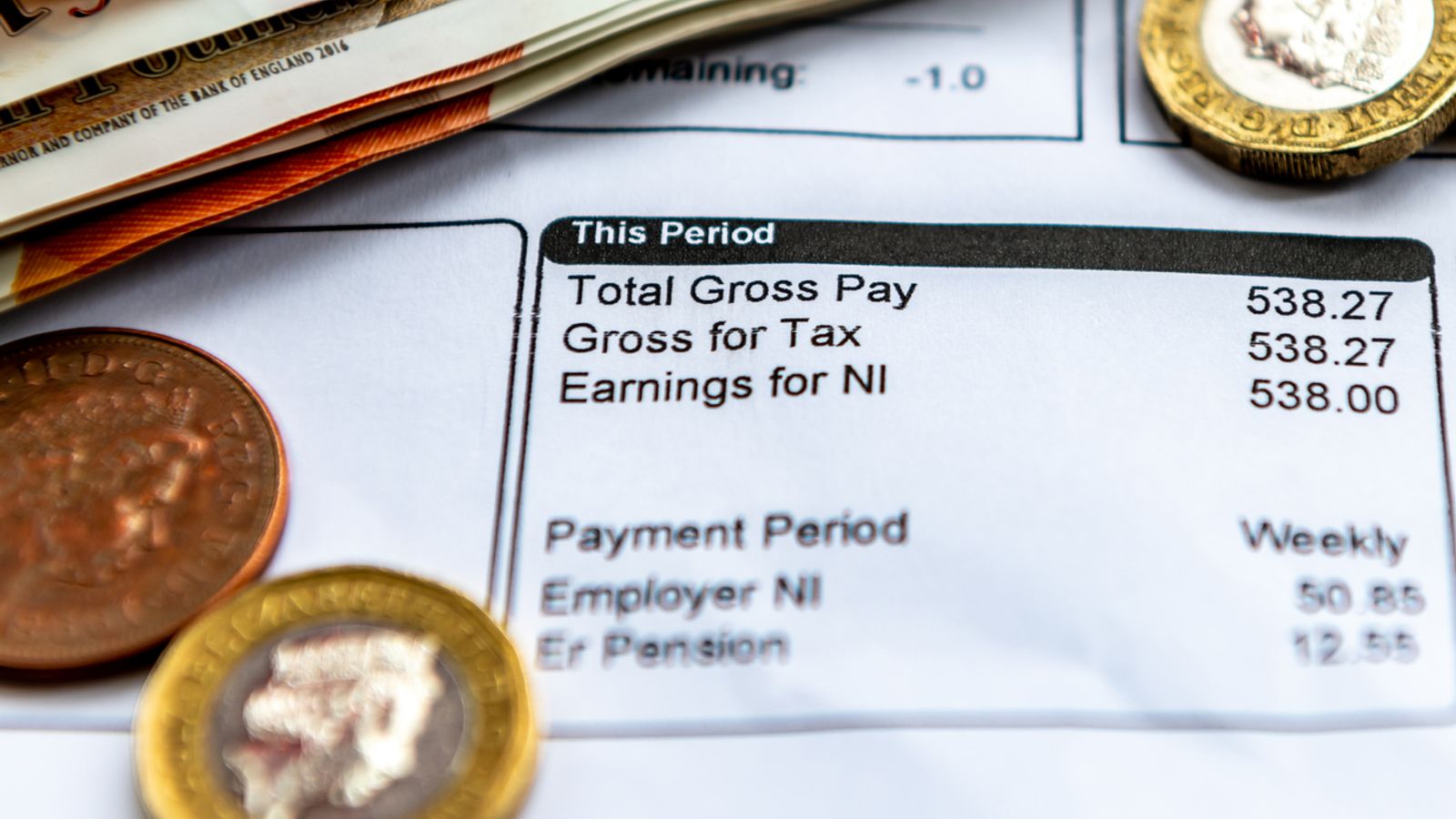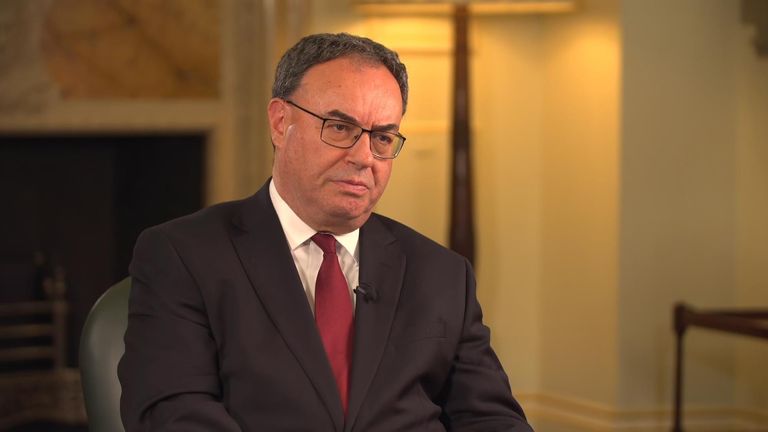Interest rate cut prospects threatened by pace of wage growth


The prospects for an interest rate cut next month have not been helped by the latest wage growth figures which have come in higher than expected.
Data from the Office for National Statistics (ONS) showed regular wage growth, excluding the effects of bonuses, was 6% higher over the three months to March compared with a year earlier.
That was no lower than the sum reported the previous month.
The ONS reported that total pay was also static, at an upwardly revised 5.7% for the period.
Money latest: 600 new skyscrapers ‘on way’ for London
Economists had been expecting declines in both readings.
Other highlights in the data was a tick up in the unemployment rate to 4.3% from 4.2%.
ONS director of economic statistics, Liz McKeown, said: “We continue to see tentative signs that the jobs market is cooling, with both employment from our household survey and the number of workers on payroll showing falls in the latest periods.
“At the same time the steady decline in the number of job vacancies has continued for a twenty-second consecutive month, although numbers remain above pre-pandemic levels.
Advertisement
“With unemployment also increasing, the number of unemployed people per vacancy has continued to rise, approaching levels seen before the onset of COVID-19.
“Earnings growth in cash terms remains high, with the recent falls in the rate now levelling off while, with inflation falling, real pay growth remains at its highest level in well over two years.”
The figures were released against a backdrop of intense speculation over the year to date on the timing of a Bank of England interest rate cut.
The Bank, which last week signalled further progress in efforts to bring down inflation, has held Bank rate at 5.25% since last summer.
The rate-setting committee wants to see a “sustainable” return to its 2% inflation target before imposing the first cut.
Please use Chrome browser for a more accessible video player
3:28
‘Path is downwards’ on interest rates
Wage growth has been among the stubborn factors of concern.
The Bank feels that the pace, currently around double the rate of price growth, risks fuelling a second round of inflation because more discretionary spending could result in higher prices.
Inflation figures out next week, which cover the month of April, are tipped to show a sharp easing in the main consumer prices index (CPI) measure largely due to plunging energy bills.
A figure just above 2% is forecast by economists.
Please use Chrome browser for a more accessible video player

3:39
UK comes out of recession
The Bank has resisted the temptation to cut borrowing costs as it believes that figure could shift back up towards 3% in the second half of the year.
Financial markets saw a 55% chance of a rate cut on 20 June – the monetary policy committee’s (MPC’s) next meeting.
While restrictive monetary policy was largely blamed for the UK’s recession during the second half of 2023, the economy has since performed better than expected.
That complicates the picture for the MPC.
Separate ONS data last week showed a 0.6% rise in gross domestic product during the first quarter of the year.
As with the wage figures, the Bank will be anxious that a growth spurt risks fanning the flames of inflation at a time when it is looking to wean the patient off the interest rate medicine.

Keep up with all the latest news from the UK and around the world by following Sky News
Policymakers have said their decisions will be data dependent.
There is a further employment report due from the ONS ahead of 20 June and two sets of inflation figures between today and that date.